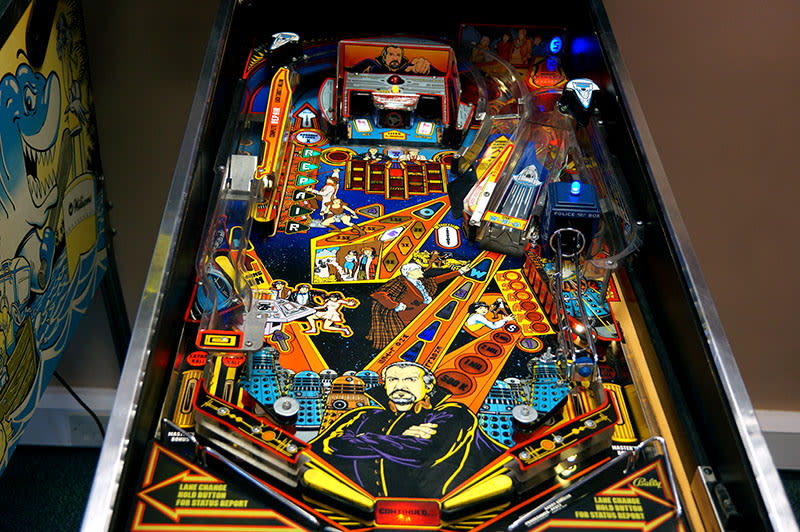

Doctor 2 (played in the series by Patrick Troughton): Allows more time to make the "Hang-On" shot and doubles its value.Doctor 1 (played in the series by William Hartnell): Awards an extra "E-S-C-A-P-E" letter every time a target in that bank is hit or the ball drops into the sinkhole below the bumpers, thus enabling easier earning of the Video Mode (which can then be used to "collect" the currently selected Doctor) and Special.Each Doctor affects the rules or scoring for a different section of the playfield, as described below. The basic gameplay is all about the various incarnations of the Doctor (seven at the time of production). Prototypes featured the old Bally-style backbox (and a totally different backglass), but this was changed to the Williams-styled one in order to cheapen the production process for both product lines. Production Dalek toppers can be made to move with "wobble head kits". Its complexity and expense led to it being cut from the production run. The effect was achieved by fitting the robot's body with a complex motor, cam, and optoelectronics system.


The first 100 games included a moving Dalek topper that would turn side-to-side while the robot was speaking. As stated in the Gameplay section, the rulesheet is rather different from other pinball machines released at the time, which didn't help popularity (and even now it is still seen as an exotic machine amongst collectors) as casual players did not understand the complex rule changes that occur during the game. It is based on the television series Doctor Who. Doctor Who is a pinball machine designed by Bill Pfutzenreuter (Pfutz) and Barry Oursler, and released by Midway (under the Bally brand name) in September 1992.


 0 kommentar(er)
0 kommentar(er)
